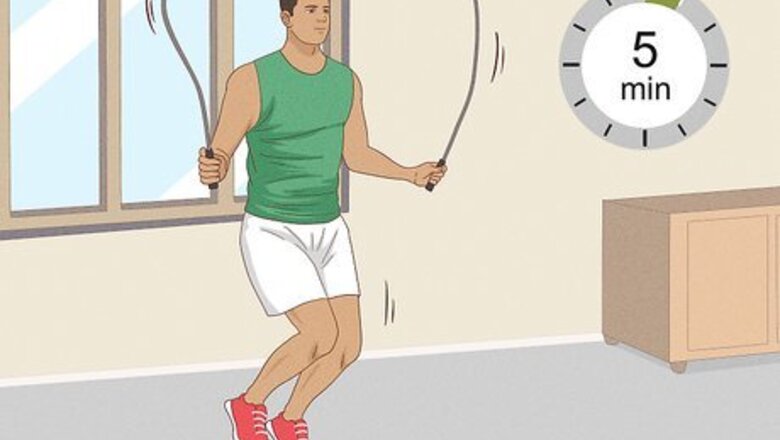
views
Working Your Abs
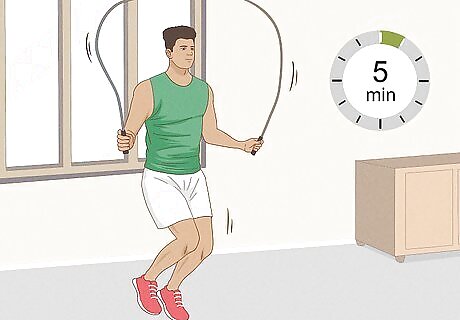
Warm up with 5 minutes of cardio before your ab exercises. You need to loosen your lower back to minimize strain on it. Back and stomach muscles are closely linked, and any good ab workout will help support your back, as well. Go for a brisk walk or jog. Turn on your favorite music and dance for 5 minutes. Jump rope. Do low-impact aerobics.
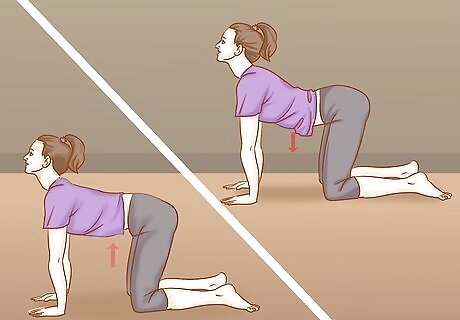
Pull your abs in and up as you do each exercise. This helps create definition across your midsection. Focus on pulling in your abs as you do each move so that you get the results you want. Pushing your abs out will make your body look bulkier in the long-run. Concentrate on pulling in your abs, occasionally checking to make sure your core looks scooped in.

Do planks. Get into a push up position, with feet hip width apart and arms shoulder width apart. Look slightly forward while you hold the position. Do not hold your breath. Focus on controlled breathing. Keep a timer nearby. Start with 2 periods of 15 seconds with a rest in between. Work up to 2 periods of 1 minute. The plank is 1 of the best core building exercises you can do because it requires a lot of strength throughout your mid-section to remain static.

Perform side planks. Get into a push up position. Rotate your body until your weight is held up by your left foot and left arm. Keep your form straight and hips up, just as you did with a plank. Hold for 15 to 60 seconds. The side plank targets your obliques and core.
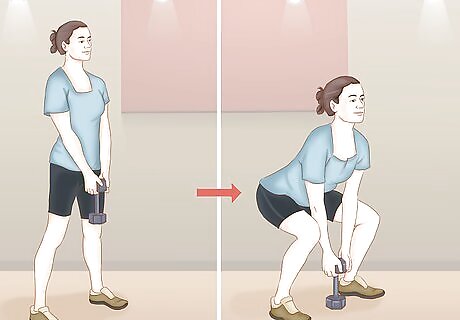
Perform squats. Hold small hand weights. Stand with your feet hip width apart. Slowly sit back, lowering yourself as though you are trying to sit in a chair. Pause and return to standing. Make sure your knees never go further forward than your toes. The squat works the pillar muscles, like quads, hamstrings, buttocks, hips, back muscles and abdominal muscles.
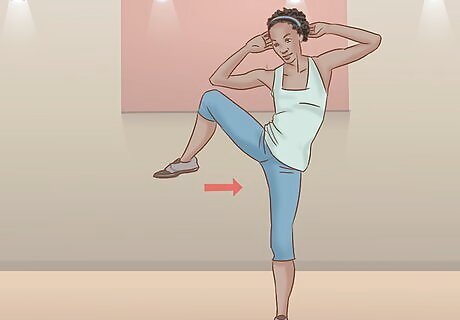
Do standing crunches. Get into a squat position, with your arms behind your head in a crunch position. Squat, and, as you rise, bring your left knee to meet your right elbow. Keep your elbow to the side of your head and twist to get your knee and elbow near to each other. They do not need to touch, but the main movement in the standing crunch should come from your stomach. Repeat 10 to 20 times. Make sure your abs are always pulled in during this exercise.
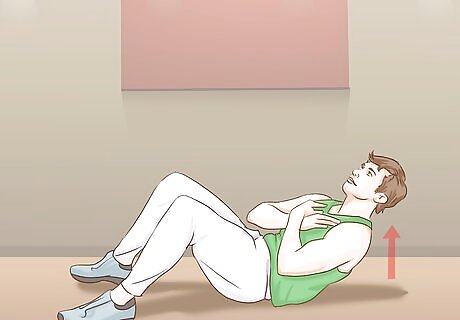
Do crunches. Lay on your back with your knees bent and your feet on the floor, shoulder-width apart. Cross your arms over your chest. Contract your abdominals, pulling your shoulders up off the floor. Hold for 2-3 seconds, then slowly lower your shoulders back to the floor. Pause for 2-3 seconds before repeating. Repeat 12 to 20 times. You can hold 5 to 10 pounds (2.3 to 4.5 kg) weights as you do your crunches to increase the difficulty. However, keep in mind that this adds more stress on your muscles, which can injure your spine. Avoid adding weights until crunches feel too easy for you. For a harder workout, try doing your crunches while laying on a large medicine ball. This makes your body unstable, so your abs will have to work harder to do the crunch correctly.

Perform bicycle crunches. Lay on your back with your knees in a table top position with your arms crossed over your chest. Contract your abdominals, pulling your shoulders up off the ground. Extend your right foot away from your body and pull in your left knee. Try to touch your right elbow to your left knee, then return to the starting position. Repeat 10 times on each side. As an alternative, you can place your hands at your ears, similar to a traditional crunch position. However, do not pull on your head at any point during the crunches. You can also extend your arms over your head.
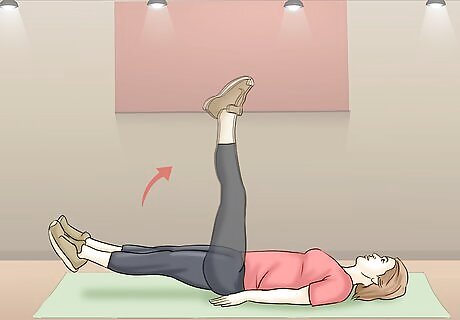
Do lower leg lifts. Place your arms behind your head in a crunch position. Hold your legs straight, like you are trying to walk on the ceiling. Lower your legs toward the ground as far as you can without forcing your abdominals out. Flex your abdominals, bringing your legs back to your starting position. Repeat 12 to 20 times. Done properly, this exercise works your transverse abdominis, the underlying muscle that wraps around your abdomen to your back.
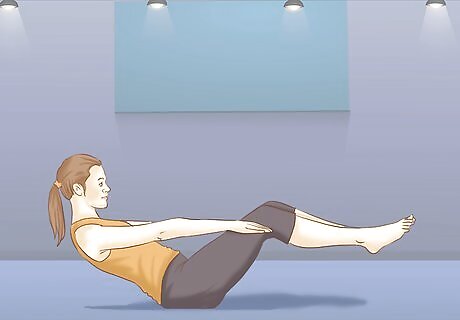
Take a Pilates, yoga, or barre class. If you get tired of your ab workout and need new ideas, a Pilates, yoga, or barre class is a great place to find them. Each of these routines include movements that tone your core, providing a great ab workout. This may also be a great alternative for people who don't enjoy traditional calisthenics or prefer a group class.
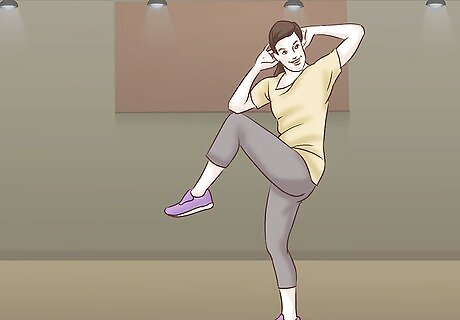
Switch up your workout every 4-6 weeks. You can change the exercises you're doing or try a variation. There are dozens of variations on planks, squats, standing crunches, and lower abdominal crunches that will help tone the muscles in new ways. For example, you could start with planks, squats, bicycle crunches, and leg lifts. On week 5, you could switch to side planks, standing crunches, and increase the weight you're using for your squats.
Making Lifestyle Changes
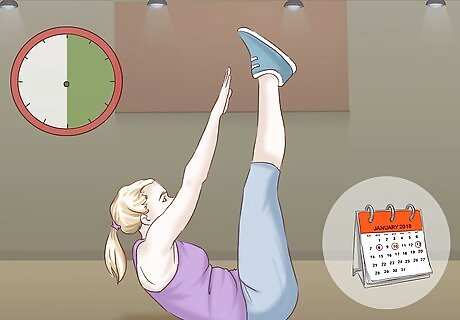
Perform 15-30 minutes of ab exercises 3-4 times per week. You can do your ab workouts alone or as a pre- or post-workout. For example, you might do your ab workout after you warm-up but before you perform your strength training or cardio workout. Rest for 1 day between your ab workouts.
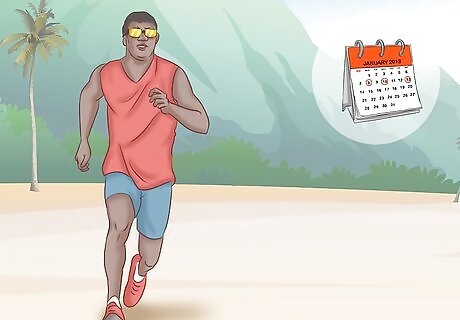
Burn off excess fat with cardio workouts 3-5 times a week. To define your abs, you need to burn off any extra fat that may be hiding them. Cardio is the best way to do that! Do at least 30 minutes of cardio 3-5 times a week. You won't get a toned look if you don't burn off your excess fat. High-intensity interval training burns a lot of calories in a shorter period of time.
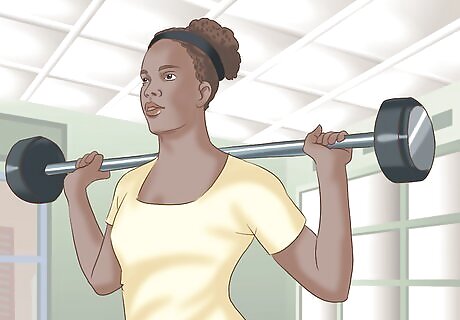
Do strength training 3 times a week. Strength training helps maintain and strengthen your muscles. Not only will this help you look more toned after you burn off your excess fat, it will also help you maintain good posture, which adds to your aesthetic. Aim to do 30 minutes of strength training 3 times per week. Make sure your abs are tucked during all weight training activities.
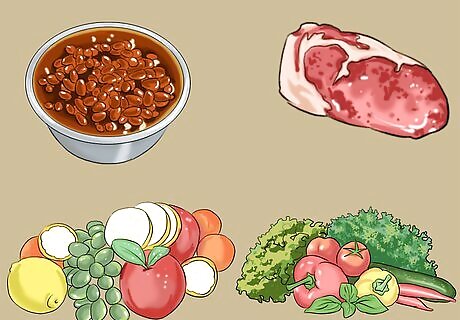
Eat a healthy, balanced diet. Remember the old adage, "Abs are made in the kitchen." Build your meals around lean proteins, vegetables, and complex carbs. Avoid processed foods and simple sugars. It's a good idea to use a fitness app to track what you eat to ensure that you are getting the right amount of calories, as well as proper amounts of protein, fat, and carbs. If you need to lose fat, you'll want to eat fewer calories than you burn. However, make sure that you are eating at least 1,200 calories if you're a woman, or 1,500 calories if you're a man.
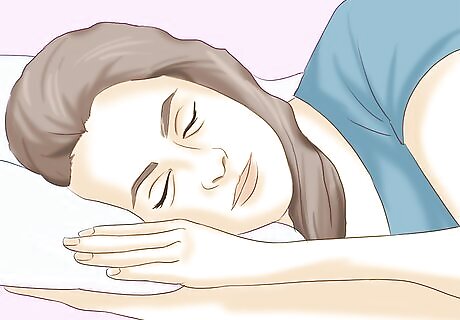
Get plenty of sleep. People who sleep less tend to develop fat in their mid-section. Although there are many possible reasons for this, the easiest way to avoid it is to sleep more. Go to bed early, and make sure your room is comfortable for sleep. Adults need 7-9 hours of sleep each night, while teens need 8-10 hours of sleep each night.
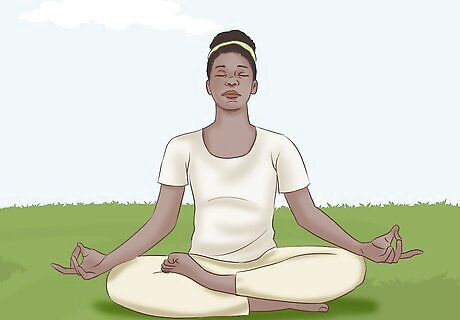
Reduce stress in your life. When you are stressed, your body releases hormones that tell you to store fat in your mid-section. Channeling stress better can help you avoid accumulating extra fat. Here are some great ways to relax: Meditate. Do yoga. Color in an adult coloring book. Go for a walk in nature. Play with your pet. Listen to calming music. Read a book. Take an aromatherapy bath.




















Comments
0 comment